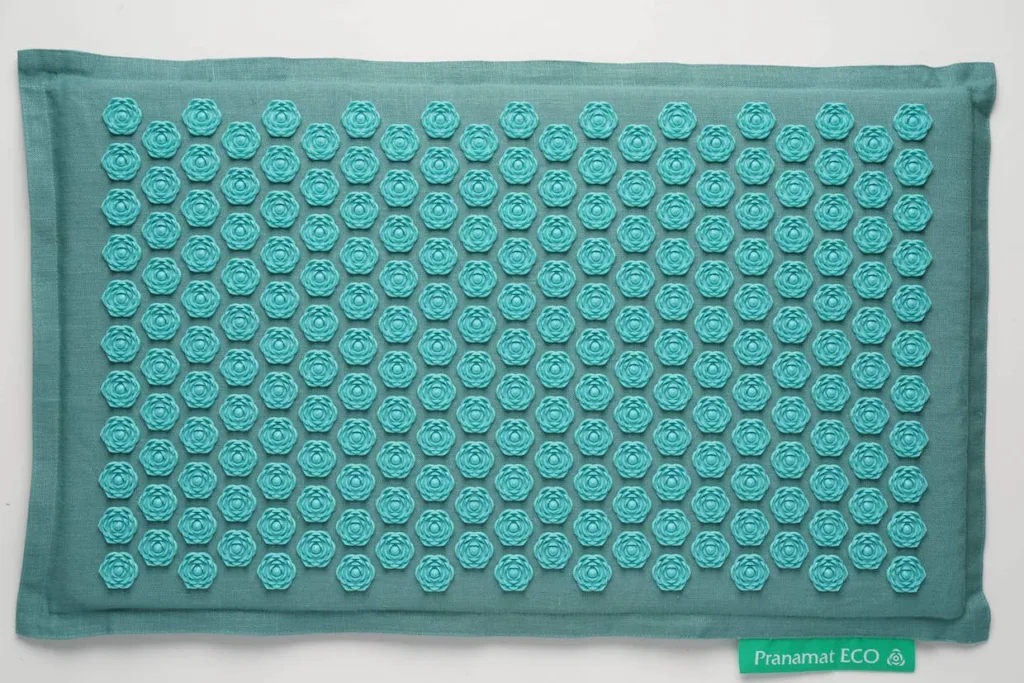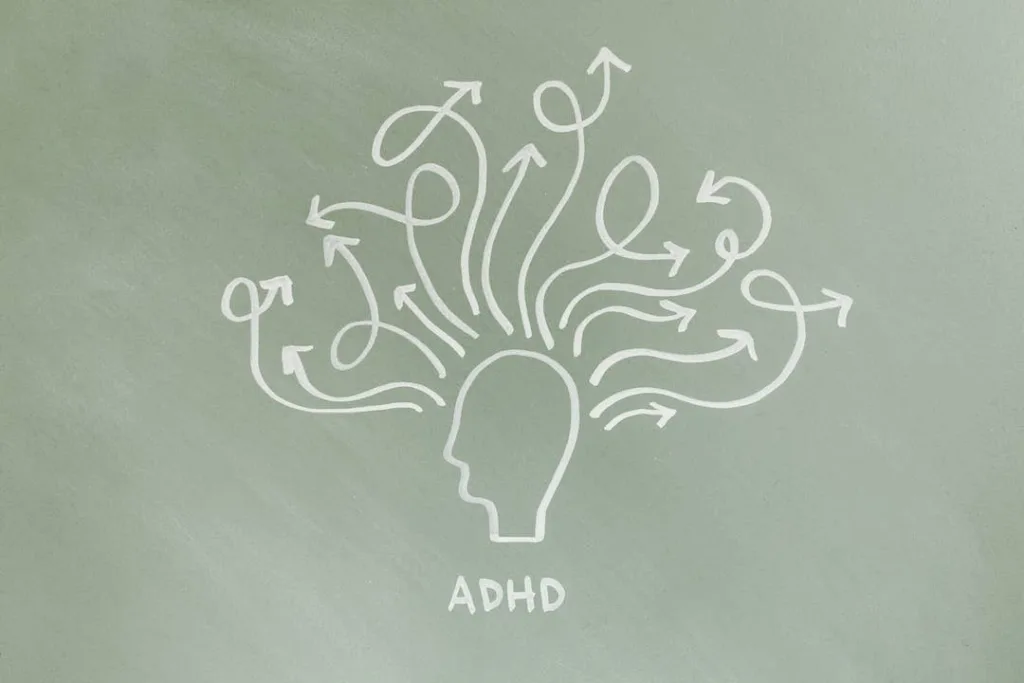Attention Deficit Hyperactivity Disorder (ADHD) affects millions worldwide, and managing its symptoms can be challenging. One promising alternative therapy that has emerged for coping with ADHD is the use of acupressure mats.
This article will explore the potential benefits of using an acupressure mat for ADHD, how it works, and precautions to consider.
We will also discuss other natural ADHD management techniques that can complement an acupressure mat.
What is ADHD?
Symptoms and Causes
ADHD is a neurodevelopmental disorder that affects both children and adults. A persistent pattern of inattention, hyperactivity, and impulsivity characterizes it. These symptoms often interfere with a person’s daily functioning and development.
While the exact cause of ADHD is unknown, it is believed to involve a combination of genetic, environmental, and neurological factors.
Diagnosis and Treatment
Diagnosing ADHD typically involves a comprehensive evaluation by a mental health professional, who will assess the presence and severity of symptoms.
Treatment options for ADHD often include medication, behavioral therapy, and lifestyle modifications to help manage symptoms.
What is an Acupressure Mat?
An acupressure mat is a self-care device designed to stimulate acupressure points on the body. It usually consists of a soft, cushioned mat covered in small plastic spikes (needles) that create pressure when lying or sitting on it.
More about acupressure mats: What You Need to Know About Acupressure Mats

How Does It Work?
Acupressure is a traditional Chinese medicine technique that involves applying pressure to specific points on the body to relieve pain, and stress, and promote overall well-being. When pressure is applied to these points, it is believed to help balance the flow of energy, or “qi,” in the body, leading to improved health and relaxation.
An acupressure mat is designed to provide these benefits by stimulating multiple acupressure points simultaneously. Read also: 10 Acupressure Mat Benefits
Acupressure Mat and ADHD
Acupressure mats and pillow sets are becoming increasingly popular as a natural remedy for various physical and mental health conditions, including ADHD. This is because the mats can stimulate pressure points that help relieve tension, promote relaxation and improve blood circulation, thereby enhancing brain function.
For people with ADHD, acupressure mat therapy can help to reduce hyperactivity, manage mood swings, and improve focus and concentration. By using the mat for short periods every day, individuals with ADHD may be able to restore balance to their nervous system and improve their overall well-being.
However, it is important to note that acupressure mats should not be used as a substitute for medication a medical professional prescribes.
Potential Benefits
Using an acupressure mat for ADHD may offer several potential benefits, including:
- Reduced stress and anxiety: Acupressure has been shown to help reduce stress and anxiety, common issues for individuals with ADHD. Read also: 8 Acupressure Mat Positions That Can Help You Relax
- Improved focus and concentration: Stimulating acupressure points may help increase blood flow to the brain, potentially improving focus and concentration. Read also: The Science Behind Standing on an Acupressure Mat. Best Positions, Practices, and Tips
- Enhanced relaxation and sleep: Many people with ADHD struggle with sleep issues, and using an acupressure mat may promote relaxation and improve sleep quality.
- Reduced pain and tension: Acupressure can help relieve muscle tension and pain, which may benefit individuals with ADHD who experience physical discomfort.
Scientific Research and Studies
While there is limited scientific research specifically on the use of acupressure mats for ADHD, studies have shown that acupressure and related techniques can have positive effects on ADHD symptoms.
For example, a study published in the Journal of Alternative and Complementary Medicine found that acupuncture, a technique closely related to acupressure, significantly improved symptoms in children with ADHD.
More research is needed to fully understand the potential benefits of acupressure mats for individuals with ADHD, but these preliminary findings are promising.
How to Use an Acupressure Mat for ADHD
Best Practices
To use an acupressure mat for ADHD, follow these best practices:
- Choose a comfortable location: Find a quiet, comfortable space to lie down or sit on the mat without distractions.
- Start with a thin layer of clothing or a towel: If you’re new to using an acupressure mat, it may initially feel intense. Start with a thin layer of clothing or a towel between your skin and the mat to reduce the intensity of the pressure.
- Experiment with different positions: Try lying on your back, sitting, or standing on the mat to stimulate different acupressure points.
- Breathe deeply and relax: Focus on taking slow, deep breaths to enhance relaxation and help manage ADHD symptoms.
Read more: How to Use an Acupressure Mat
Time and Duration
Start by using the acupressure mat for 5-15 minutes daily and gradually increase the duration as you become more comfortable with the sensation.
It’s essential to listen to your body and adjust the time and frequency accordingly.
How to choose the best acupressure mat set for symptoms of ADHD
When choosing the best acupressure mat set for symptoms of ADHD, it’s important to consider our top priorities: high quality and safety. When researching for the best acupressure mats, it’s crucial to look for products made with non-toxic and eco-friendly materials free from harmful chemicals.
I have already done a great job and compared all the best acupressure sets worth considering: Best Acupressure Mats of 2023 (Ranked & Detailed Review)
Additionally, we should consider the size and design of the mat set and ensure that it’s convenient for our needs. Ultimately, the best acupressure mat set or neck pillow for symptoms of ADHD will offer effective relief and be easy to use.
By considering these factors, we can confidently choose a safe and high-quality acupressure mat set that will provide the relief we seek.
Precautions and Considerations
Side Effects
While most people can use an acupressure mat without any issues, some may experience temporary side effects, such as skin irritation, dizziness, or lightheadedness: The Dark Side of Acupressure Mats: How It Can Harm You. These side effects typically resolve on their own and can be minimized using a mat with a layer of clothing or a towel.
When to Avoid Acupressure Mats
Certain individuals should avoid using an acupressure mat, including those with:
- Skin conditions: Individuals with skin conditions or sensitivities may experience increased irritation from the mat’s spikes.
- Blood clotting disorders: People with blood clotting disorders or those taking blood-thinning medications should consult their healthcare provider before using an acupressure mat.
- Pregnancy: Pregnant individuals should consult their healthcare provider before using an acupressure mat, as certain acupressure points should be avoided during pregnancy.

Other Natural ADHD Management Techniques
In addition to using an acupressure mat, consider incorporating the following natural techniques into your ADHD management plan:
- Mindfulness and Meditation: Mindfulness and meditation can help improve focus, reduce stress, and promote emotional well-being.
- Diet and Nutrition: Eating a balanced diet rich in essential nutrients, such as omega-3 fatty acids, can support brain health and overall wellness. You can also try Lion’s Mane Mushrooms which helps with ADHD.
- Exercise and Yoga: Regular physical activity and yoga can help reduce ADHD symptoms by promoting relaxation, improving focus, and increasing the production of neurotransmitters associated with mood and attention.
Conclusion
While more research is needed to fully understand the potential benefits of acupressure mats for individuals with ADHD, using an acupressure mat may offer a natural, non-invasive approach to managing symptoms.
Along with other natural techniques, such as mindfulness, diet, and exercise, an acupressure mat could be a valuable addition to your ADHD management plan.
Consult with a healthcare professional before starting any new treatment or therapy.
FAQs about acupressure mats and ADHD
- How do acupressure mats work? Acupressure mats work by stimulating multiple acupressure points on the body simultaneously, helping to balance the flow of energy, or “qi,” and promoting relaxation, pain relief, and overall well-being.
- How long should I use an acupressure mat for ADHD? Start using the mat for 10 to 20 minutes daily and gradually increase the duration as you become more comfortable with the sensation. Listen to your body and adjust the time and frequency accordingly.
- Are there any risks or side effects of using an acupressure mat? Some individuals may experience temporary side effects such as skin irritation, dizziness, or lightheadedness. These side effects typically resolve on their own and can be minimized using a mat with a layer of clothing or a towel.
- Can I use an acupressure mat if I’m pregnant or have a medical condition? Pregnant individuals and those with certain medical conditions, such as blood clotting disorders or skin conditions, should consult their healthcare provider before using an acupressure mat.
- Can an acupressure mat be used in combination with other ADHD treatments? Yes, an acupressure mat can be used alongside other ADHD treatments, such as medication, therapy, and lifestyle modifications. Always consult with your healthcare provider before starting any new treatment or therapy.

